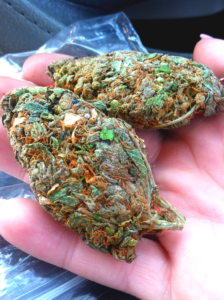
Weed in Puli — a practical, local guide.
Quick summary (TL;DR) Weed in Puli
- Puli is a market town in the Puli Basin of Nantou County, central Taiwan — a popular base for Sun Moon Lake and mountain scenery. (Wikipedia)In Taiwan, cannabis (marijuana) remains illegal to possess, grow, use or traffic; penalties can be severe for supply, production and trafficking. The legal environment is strict and law enforcement has been active in seizures. Weed in Puli
- If you’re visiting Puli, treat cannabis as illegal: do not bring it into Taiwan, do not use it in public, and be aware of penalties. This article explains the legal situation, practical safety advice, and local context for residents and travelers.
Introduction: why this matters for Puli visitors and locals Weed in Puli
Puli is a charming, accessible town in the geographic center of Taiwan, often used as a gateway to Sun Moon Lake, Cingjing Farm and the central mountain ranges. It’s a place for temples, tea farms, breweries and hiking — not a cannabis tourism hub. But as cannabis policies change in other countries and cannabis culture spreads online, travelers sometimes wonder whether places like Puli are “weed-friendly.” This guide gives a clear, practical answer and the local context so you can make safe, legal choices. (Wikipedia) Weed in Puli
Puli at a glance (short travel primer) Weed in Puli
- Where: Puli Township, Nantou County — central Taiwan, Puli Basin. Elevation ~380–700 m. Population ~70–80k. (Wikipedia)
- Why people go: gateway to Sun Moon Lake, Chung Tai Chan Monastery, Taomi eco-village, local breweries and mountain routes.
The legal situation in Taiwan (clear facts)
Short answer: cannabis is illegal in Taiwan for recreational use. Possession, production, transport, import/export and sale can lead to criminal penalties. Taiwan classifies marijuana under narcotics controls and can impose harsh penalties for trafficking and supply. Recent reports show authorities continuing seizures and government statements that possession/use remain illegal.
What this means practically
- Do not bring cannabis (any form) into Taiwan — customs actively seize items and investigate. Seizures of cannabis products (buds, edibles, oils) have been rising.
Recent context: policy debate and enforcement
In 2024–2025 there has been more public discussion in Taiwan about cannabis policy — advocacy groups have organized rallies calling for decriminalization or legal reform, and the debate has been visible in the media.
Health, safety and harm reduction (practical guidance)
Even where cannabis is legal, harm-reduction is useful. In Taiwan it’s doubly relevant because of the legal risks.
- If you use cannabis elsewhere: do not attempt to bring any cannabis product (flower, edibles, vape cartridges, tinctures, topical creams) into Taiwan. Customs works with airlines and international partners; items are being seized.
For residents (Puli locals) — what to be aware of
- Growing cannabis at home or on farmland is illegal; police have warned against buying seeds to experiment with cultivation. There have been local enforcement actions and public notices.
For travelers — do’s and don’ts in Puli
Do
- Enjoy Puli’s attractions: breweries, temples, Taomi eco-village and mountain scenery.
- Don’t bring cannabis or cannabis products into Taiwan — that includes foods, oils, gummies, and many imported CBD products with THC traces. Customs is actively seizing such items.
Scenarios & what to do
Scenario 1 — You find cannabis in your hotel or dorm room
- Notify local authorities if unsure (and follow hotel guidance). Don’t handle or move the items beyond taking a photo for evidence. Seek local consular assistance if you are a foreign national.
Policy watchers: places to follow for updates
If you care about the evolving policy debate, follow reliable local news outlets and official government statements:
- Official statements from Taiwan’s Ministry of Justice and customs for legal guidance and seizure reports.
FAQs (human-readable, concise)
Q1 — Is cannabis legal in Puli or Taiwan?
A: No. Cannabis remains illegal for recreational use across Taiwan, including Puli. Import, sale, cultivation and trafficking carry serious penalties; public possession/use can lead to arrest.
Q2 — Can I bring CBD oil or hemp products into Taiwan?
A: Many CBD/hemp products are tightly regulated. Products containing THC or other controlled substances are illegal. Even imported items marketed as CBD can be seized if they contain prohibited THC traces. Check official customs guidance before traveling.
Q3 — Are there any dispensaries or legal shops in Puli?
A: No. There are no legal cannabis dispensaries in Puli or elsewhere in Taiwan for recreational products. Any shop claiming to sell recreational marijuana would be operating illegally.
Q4 — What happens if customs finds cannabis in my luggage?
A: Customs will seize the item and may detain you for questioning; legal consequences depend on the quantity and context. You may face criminal charges. Cooperate and contact your embassy if you are a foreign national.
Q5 — Are there medical cannabis options in Taiwan?
A: Taiwan has been conservative on medical cannabis. If there are any narrow medical allowances, they are tightly controlled; ordinary travelers should not expect access to medical marijuana while in Taiwan. Check official medical and regulatory channels for the most current information.
Practical packing checklist (if traveling to Puli)
- Passport, travel insurance, and copies of prescriptions.
- Local currency (NT$), credit card, Octopus-like transport cards where applicable.
- Comfortable shoes for hiking and sightseeing.
- No cannabis products — do not pack any items that could be interpreted as containing THC. Customs will seize them. (
Final notes & practical advice
- Respect local law and culture. Taiwan’s central mountain towns, including Puli, are best enjoyed for their scenery, temples, tea and hospitality. Bringing or using cannabis in Puli puts you at legal risk and harms your chance to have a relaxed, safe trip.
I have used Global Weedworld (Globalweedworld@galaxyhit.com) at least 4-10 times and every time it has been a top notch.
He is the best local plug you can find around. He is very pleasant, friendly and fast. He is a lifesaver.
He sells top shelf WEED and other stuffs at moderate prices. I will always recommend this guy when people ask me my ” go-to”.
All you have to do is follow his instructions.
Just send him an email and I bet you will come back for more once you finish with what you bought because his quality is amazing.
Also Contact him on his telegram link telegramhttps://t.me/GlobalweedWorld
⚠️ Know that he do not have telegram channels only the telegram link above

I’ve been buying online for a while, but this shop’s service and product quality set them apart.
Everything was fresh, potent, and the customer service is outstanding
My first purchase and I’m hooked.
Excellent product and the customer support was super helpful in answering all my questions. Highly recommend this site
told me that he doesn’t accept cash and i thought he is one of those idiots who took advantages of people but i decided to give him a try by making the payment first using bitcoin, surprisingly he arrived within the time he promised me and i received what i ordered. thank you, Global weed world, whenever i return here you will always be my plug without doubt.
I’ve been buying from a lot of different places, but this one stands out. The bud is top-notch, and the prices are reasonable.
Will be ordering again soon! Amazing experience! The product was exactly as described,
and the packaging was on point—safe and odor-free. Thank you!
Delivery was crazy fast, and the product… This place is setting the bar for online weed shops. Keep doing what you’re doing. You’ve got a loyal customer for life.
Best decision I made all week. Real ones know. This site is fire. I don’t usually leave reviews, but this deserved one.
I was worried about ordering online, but the packaging was perfect completely. You can tell they care about their customers. Fast replies and reliable support.